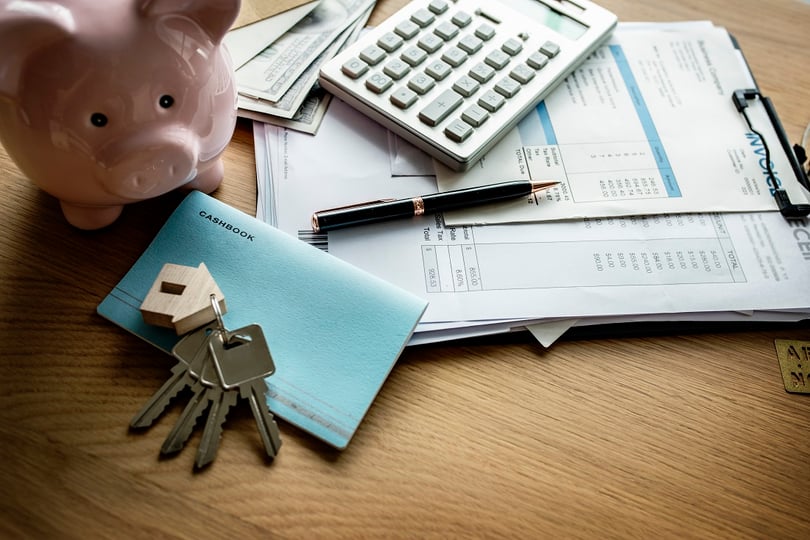Rental Property Maintenance Expenses: How to Estimate Operating Costs

Rental Property Maintenance Expenses: How to Estimate Operating Costs
One of the most important tools you'll need to manage a rental property is a realistic maintenance budget. If you don’t have a set budget for rental property maintenance expenses, then you could end up losing money on your rental properties or creating an unpleasant and unsafe environment for residents.
Here are a few standard guidelines that will help you estimate your rental property maintenance costs, as well as some basic rules for creating a budget that won't put you in the red.
Know the Rules of Thumb for Maintenance Costs
There are several rules of thumb that are followed by property management teams to estimate rental property maintenance expenses over the course of the year. While they are different approaches, each rule results in similar numbers, and the overall goal is the same—to ensure that you have enough money set aside for both routine maintenance and unexpected emergencies.
A few top rules to consider, depending on your property type, include:
- 50% Rule: Set aside half of your rental income each month for repairs, maintenance, taxes, insurance, and other costs related to your property.
- 1% Rule: Maintenance will cost about 1% of the property value per year. So, if a unit is valued at $250,000, then maintenance will cost around $2,500.
- Square Footage Rule: Set aside $1 per square foot for annual maintenance costs. A 2,000 square-foot rental will need $2,000 in maintenance costs per year.
While there are no hard-and-fast rules for how much you should budget for property maintenance, the formulas above provide tried-and-true guidelines to help you be prepared for the worst. Keep in mind that you might end up not needing the entire budget, and instead opt to allocate the surplus toward big repairs or improvements in the next year or years.
Plan for Major Projects a Few Years Ahead
You can’t plan for everything. A tornado or hurricane could sweep through your area and damage your rental property so seriously that it could take several months to repair. However, there are known expenses that you can plan for.
For example, the exterior paint on a property usually lasts between four and ten years. A roof typically needs to be replaced every 15-25 years. These are repairs and upgrades you can plan and budget for down the line because they likely won’t create immediate or urgent requests from your residents.
Look at the year ahead and determine which major project is most important. This could be replacing the HVAC system or repaving the driveway. You can also identify a few other major projects that you’d like to tackle. Some Property Managers start planning and budgeting for projects three or four years in advance, depending on the age, type of property, and what the market demands.
Staying ahead of big repairs can prevent unexpected problems related to regular maintenance. It will also help you budget your rental property maintenance expenses.
Identify Which Repairs You Can Handle
There’s a common phrase in automotive repair that says, “it’s a ten cent part but a $1,000 job,” meaning that the repair is incredibly complex and time-consuming even though the part costs next to nothing. The same concept can be applied to property maintenance. Issues with plumbing and electrical work might not look complex, but then actually require time and expertise to complete the work properly.
When it comes to rental property maintenance, knowing which repairs your team can handle and which ones you need to contract out for is important.
Remember: the cost isn’t just money, it’s the time. Residents don’t care that you saved money by completing a repair in-house if it means the water needs to get shut off for a whole day instead of an hour or two. Plus, longer repair times due to inexperience means your maintenance staff has to put more tasks on the back burner.
Keep Your Rental Property Maintenance Expenses Organized
The longer you manage a certain property, the more you will get a feel for the rental property maintenance expenses. The history of repairs and maintenance will help you anticipate what to expect. And, if you use a property maintenance solution like HOMEE, you can monitor expenses and:
- Oversee all service requests
- Manage work orders easily
- Gain visibility into performance of in-house maintenance techs
- Have a solution for emergency maintenance issues
To learn more about how HOMEE can help you manage work orders and keep your rental property maintenance expenses on track, request a free demo today.
- The Rental Maintenance Checklist Every Property Manager Needs
- How On-Demand Property Maintenance Creates Competitive Advantage
- 5 Tips to Help You Manage Maintenance at Multiple Rental Properties
- How to Increase Efficiency with a Property Maintenance Solution
- What is Common Area Maintenance, and Why Should I Care




